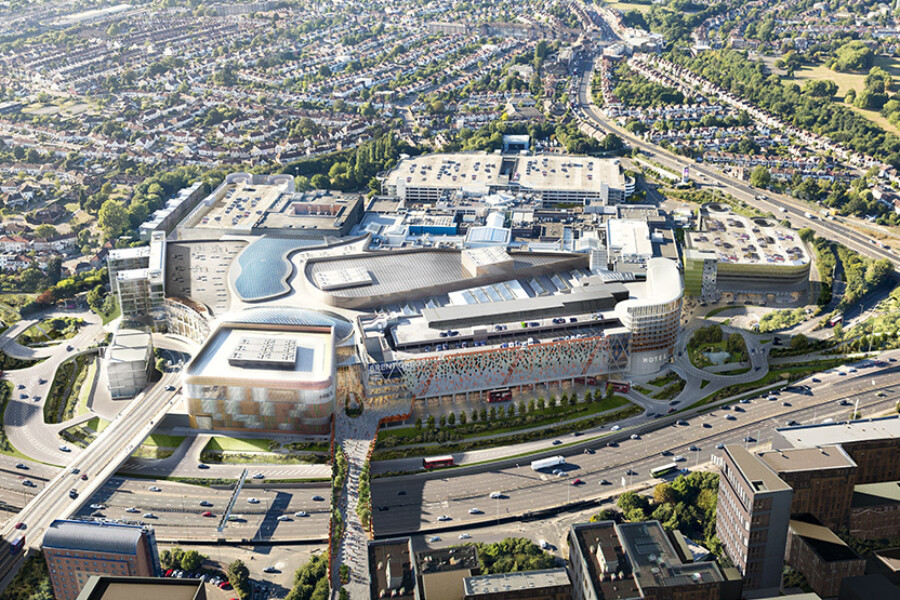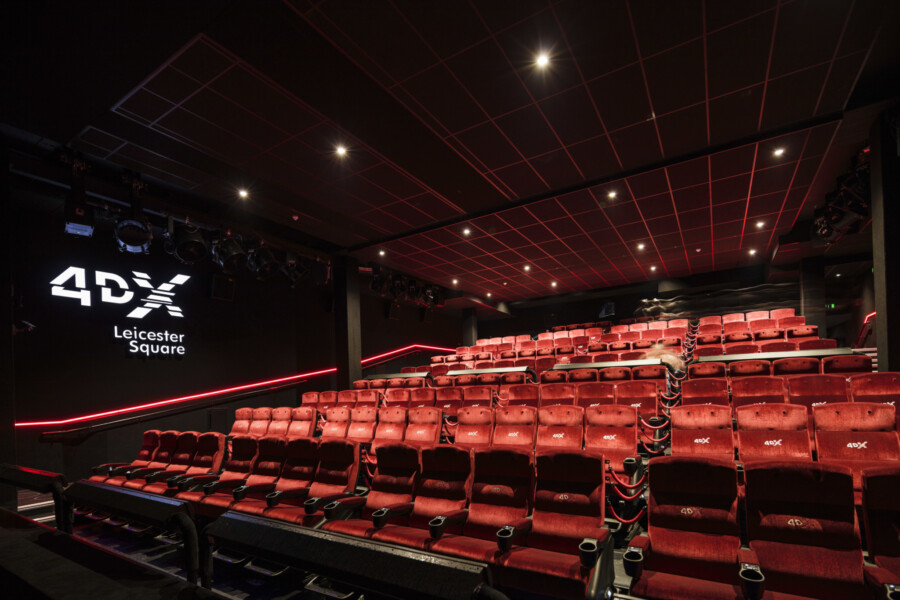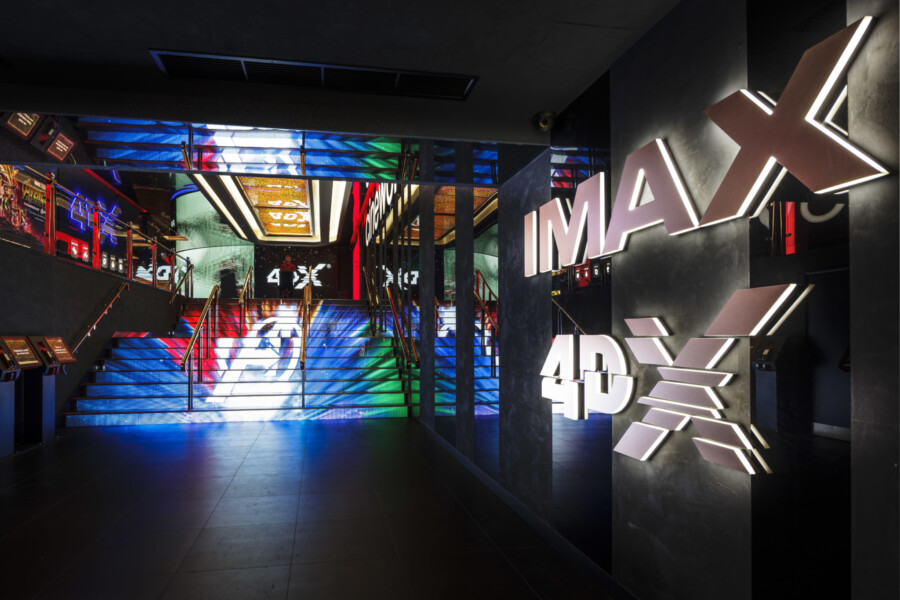
People Profile: Peter Hegarty on the importance to clients of the role of Principal Designer
Peter Hegarty established, and leads, Chapman Taylor’s Principal Designer services for our clients. He is also a lead member of the in-house Technical Group and is responsible for the integration of our ISO 9001 and risk management initiatives within the design process. With over 30 years' design experience as an architect on commercial office projects, residential schemes, tenant-side retail, industrial schemes and transport projects, he has particular expertise in the delivery of detailed design solutions on complex developments. Peter talked to us about the building which inspired his love of architecture, his career path and the value to clients of Chapman Taylor’s Principal Design services.
Tell about your background and why you chose architecture as a career?
I was born in Consett in County Durham, where my father and grandfather were steelworkers. I was the first in my family to go to university – I went to what was then Leeds Polytechnic (now Leeds Beckett University).
I knew that I wanted to become an architect from the age of twelve – I visited my older brother in Liverpool and, while there, visited Frederick Gibberd’s new Catholic cathedral, which made a profound impression on me at that age. I loved the dramatic nature of the space, the extensive glazing and the exposed concrete. Having grown up in a town where the buildings all tended to be gritty, two-st14norey Victorian industrial buildings, this was my first real exposure to modern architecture. When I went home, I immediately started drawing plans. Coincidentally, when I did my year out in practice working for an architectural practice for the first time, it was for the Frederick Gibberd Partnership in Central London so I knew I was on the right path!
Where did you work after leaving university?
After graduating in a recession I found short term work at Shepherd Homes, a Yorkshire-based house building company, before going to work for Abbey Hanson Rowe (AHR) Architects in London – there was someone I knew who played a major part in that decision to move to London, and I’m happy to say that she became my wife! Following that I worked for one or two medium-sized companies doing architectural work on office, residential and some retail projects.
I joined MHM Partnership, doing commercial and some housing association work and, later joined the director I had been working with when he set up a new firm in Covent Garden –for some of the time it was the two of us. I spent about 12 years there, helping design fairly large office buildings (for such a small practice) or, in the quiet periods, residential jobs mostly in Kent, where I got a lot of experience doing executive house extensions, listed buildings, swimming pools and so on. I learned a lot from him about meeting the required standards of work and the nuts and bolts of practice and construction. It was quite hard, being young, to go onto site and get what you wanted done, but I learned how to win people around, using humour and asking them to do things in a diplomatic way.
How did you become more involved in the technical side of the work?
I had always been interested in that side of practice and had plenty of exposure to it in a small company. At this point, we started using CAD and literally learned how to use it from scratch. In CGL, my previous practice before Chapman Taylor, I began to take on those technical roles more and more.
I would always volunteer for different types of support work, such as risk management in relation to Professional Indemnity Insurance for the firm every year, conducting technical reviews of projects, and instituting the Quality Assurance system there. My architectural projects were for Transport for London (TfL), including at Brixton, Elephant & Castle and Rickmansworth – I had to become familiar with exacting compliance requirements for those.
When did you join Chapman Taylor, and what role did you take on?
After leaving CGL, I started with Chapman Taylor in April 2015 – they were looking for somebody to join the Technical team, and also to take on the role of Principal Designer (a requirement for projects which came into law that year, and for which the Lead Architect is the obvious candidate), while taking on Technical Panel duties and still doing some project work (initially at The Lexicon shopping centre in Bracknell).
The PD role involves working on behalf of clients in the pre-construction phases of a project to take control of, and co-ordinate, the work of designers from a health and safety angle – influencing the way in which health and safety-related aspects of work throughout the project are carried out. It involves the safety of workers, but also of the end-users and visitors. What was refreshing was that Chapman Taylor embraced having a Principal Designer capability – some other architectural firms did not.
Larger developers and contractors take their duties in this regard quite seriously now, and our ability to offer them Principal Designer services from an architectural standpoint is a constructive approach. I created the firm’s Principal Designer protocols, which continue to evolve, and am shaping the role in the spirit intended by the Health and Safety Executive, which proposes involvement in the design development in each project throughout the evolution of the scheme, and bringing a design understanding to it.
I read everything I can in connection with each project and understand the project as an architect first of all but always with a view to the safety aspect. I am lucky to be involved with major projects in the office and small ones as well.
My approach is to attend many workshops and meetings to understand the whole scheme and to contribute and comment where I think there are issues. I write specific reports on particular design aspects, whether that be the safety of residential roof gardens or railway platform balustrades or the best way in which to deal with hazardous materials. More recently I have been closely involved with the changing regulatory regime around fire both in facades and internally and am currently spending a lot of time working through that.
What projects you have worked on for Chapman Taylor in this role?
I worked on a major refurbishment and extension to Brent Cross shopping centre and have been engaged on a number of cinema projects we carried out for Cineworld, including at Wandsworth, Leicester Square and the O2 Arena. The aim is to ensure that none of the projects are memorable for negative reasons.
As well as my role as Principal Designer, I also undertake Client’s CDM duties on many projects – clients are bound by regulations to fulfil a number of requirements, and aren’t always able to do that by themselves, so they subcontract that to Chapman Taylor (though remaining legally responsible themselves).
What else are you working on at the moment?
I am doing some work for the Crown Estate, as well as some small retail projects in shopping centres and am involved with a number of medium and high-rise residential and mixed-use projects including delivery projects for Contractors.
I also undertake the Quality Manager role at Chapman Taylor and am closely involved with risk management in the business. We are trying to engage people much more, and are working to incorporate more visual content in our technical and compliance literature so that it isn’t just page after page of text. Part of this is utilising our Sharepoint database and Atvero document management system to hold and communicate the information.
As a member of the CT Technical Panel, I undertake audits on the QMS and also perform Project Health Checks, looking at all kinds of issues from reviewing construction detailing to the use of BIM. Our role is to ensure that schemes and layouts are compliant with regulations and good practice. We are now looking ahead to the future changes in regulations and ensuring we can evidence all that will be required for the Building Safety Bill gateways, the Golden Thread, our own competence and the ability to work on High Risk Buildings (HRBs) I also do CPDs (Continuing Professional Development tutorials) on health and safety, fire and quality, these are useful ways of getting the message out and also for demonstrating that everyone in Chapman Taylor understands the latest developments and requirements. The presentations for these CPDs are joint with the other UK studios (in Bristol and Manchester) so that all three studios are learning the same things. In addition, I talk about health, safety and well-being issues at the bi-monthly breakfast meetings at the London studio.
Do you ever get annoyed when you see poor or unsafe design/construction elsewhere?
I do – and if I see a building environment which I know to be hazardous or a threat to life and limb I will phone the local building control unit or the HSE.
How do you see your role evolving?
I envisage the communication of risks in a much more visual way. It is something I would like to see become the norm in the near future, particularly if incorporated into BIM (Building Information Modelling) 3D models, which would greatly enhance the ability to coordinate responses to those design risks among the construction teams. Virtual Reality and Augmented Reality technology can also be used to this end.
We have followed the Grenfell Inquiry closely and reviewed our own procedures to learn from everything that has been revealed. The gradual development of the Building Safety Bill and the associated legislation and guidance has meant ensuring that we prepare for changes that haven’t yet happened. So developing a simple approach to the Golden Thread, and how this will impact all structural and fire design has been necessary. We are also looking at measures to ensure we consider all parts of the Building Regulations and can evidence this. Increasingly we are advising clients on the adoption of standards and processes that will avoid difficulties in years ahead when all high-rise residential properties will need to be assessed for registration before occupation will be permitted.
On a personal level, I have completed a Diploma in Construction Fire Safety and Fire risk Management intending to keep ahead of the stringent new requirements approaching for competency in the Principal Designer role.
How have clients and contractors responded to Chapman Taylor’s Principal Designer work?
Having someone there whose role is to keep on top of the health and safety side of a project is important to them – the reputational damage and costs to them would be huge if something went badly wrong as a result of a design or construction mistake, not to mention the human cost on individuals impacted. Having someone with Architectural skills helps with the relevance of risks and is an extra pair of eyes on the development of the scheme.
Clients are appreciative of what Chapman Taylor does for them in this regard, both in the Principal Designer role and the Client’s Duties role, and it helps drive repeat business for us. It is satisfying to know that these aspects of what we offer make a major difference to the standard to which a project is delivered, and to the reputation of Chapman Taylor as a company which is industry-leading in the provision of these services.



